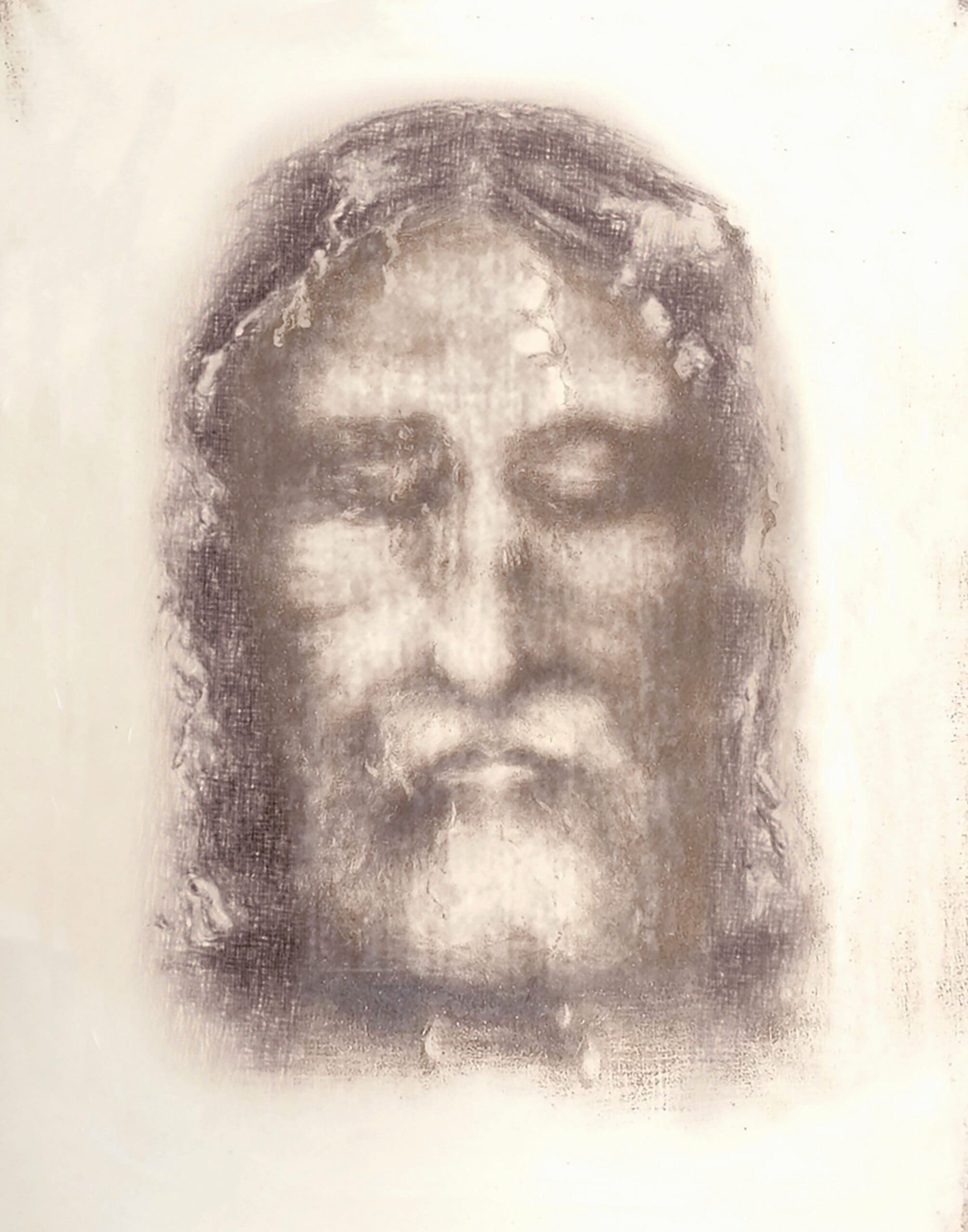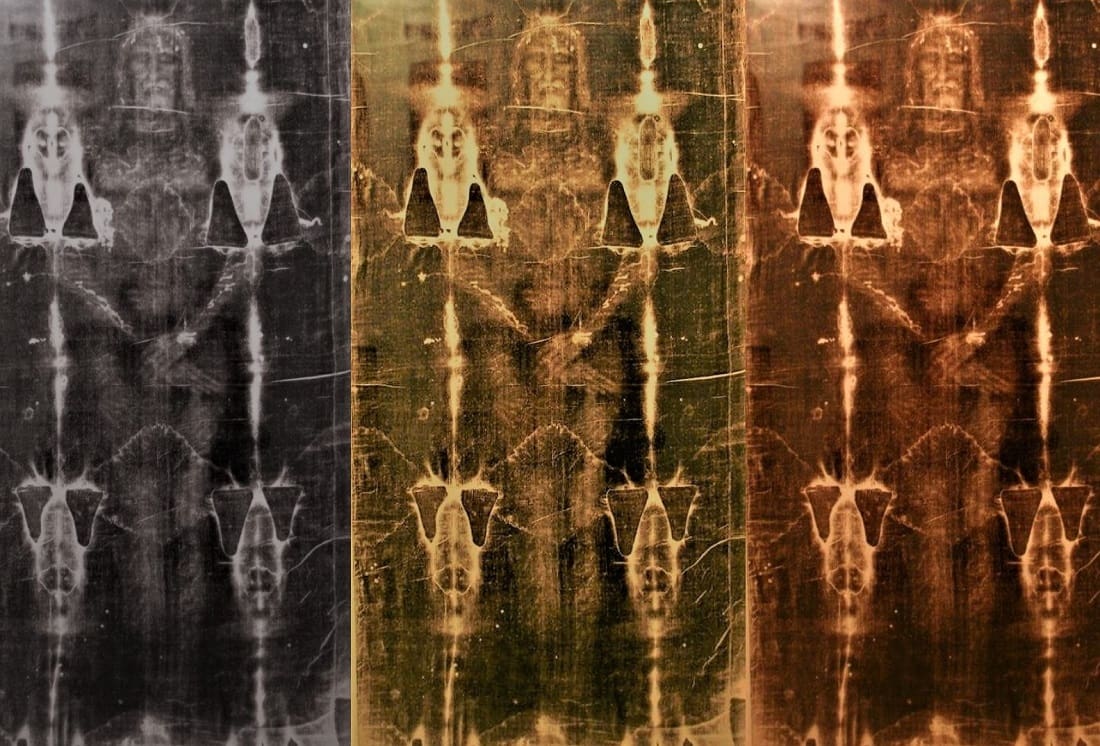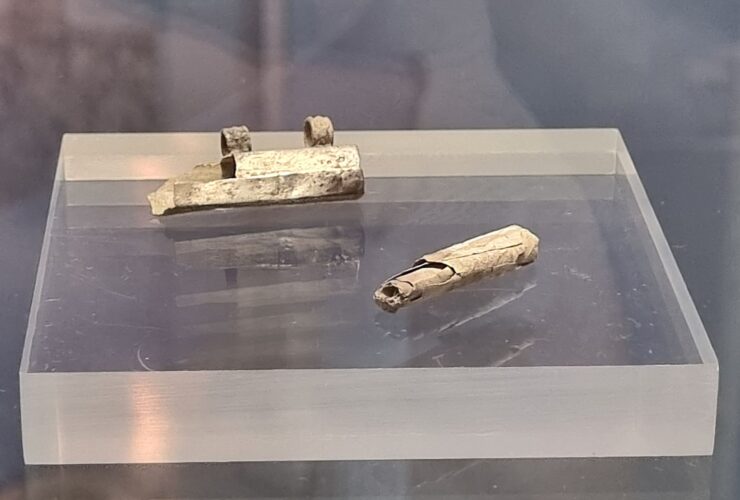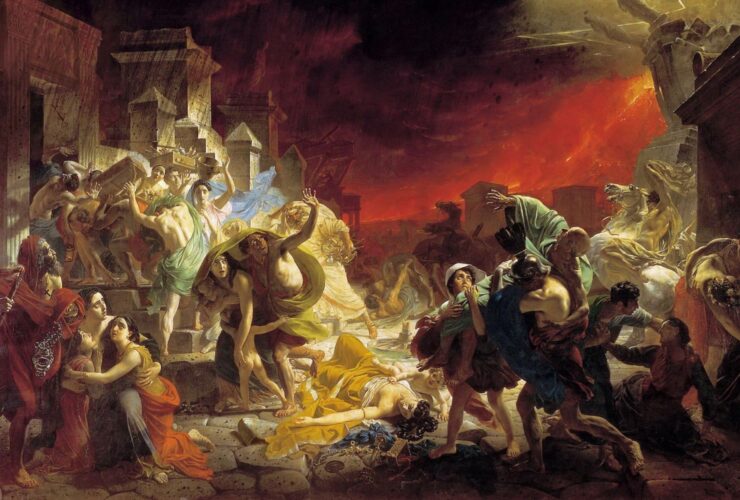The Shroud of Turin is real. I’m convinced of it. To think such is not a testimony of my faith either, nor is it intellectually grounded in any merit of my own. The scientific evidence is so staggering, and corresponds to history and Scripture so well, that it is much harder to accept it’s a forgery than it is to accept its authenticity. News agencies have all but exploded with exposés on the Shroud as of late, so I see no need to hash it all out, here. But, highlighting the key evidence is crucial to let the weight of this historical fact sink in: We have an ancient photograph of Jesus Christ—the visible image of the invisible God. A fact that, if true, has incredible theological implications for iconoclastic Protestants.
Scientific Evidence of Jesus’ Death
In 1978, a team of leading experts and scientists were assembled and given permission to throughly examine the Shroud, known as the Shroud of Turin Research Project (or STURP for short). Among them were NASA image specialists, electrical engineers, physicists, chemists, a forensic pathologist, and other highly decorated academics. In 1981, the study group concluded that “the Shroud image is that of a real human form of a scourged, crucified man. It is not the product of an artist. The bloodstains are composed of hemoglobin and also give a positive test for serum albumin.”[1] They continued to state that the image is an “ongoing mystery” and will require further study to prove its authenticity. The mystery: How did the image get on the Shroud in the first place?
Seven years later, the Vatican permitted tiny samples from the corner of the Shroud to be carbon-14 tested by three independent labs in the United States, Britain, and Switzerland. All three labs drew a controversial conclusion: The rate of decay of radioactive isotope dated the Shroud to the Middle Ages, sometime between 1260 to 1390 AD, a whopping twelve-hundred years after Christ’s death and resurrection. It completely contradicted the earlier results, and has been the primary reason many reject or distrust the Shroud’s authenticity; this, plus the fact that there were a lot of fraudulent medieval relics and artistic productions disguised as artifacts throughout Christendom’s history (such when dozens of medieval churches claimed to possess the Holy Prepuce of Jesus Christ… yes, the very same foreskin removed during His circumcision on the eighth day after birth. Don’t ask). Needless to say, its authentic public image was not unjustly put into question and shrouded in doubt. Even though the radiocarbon dating was the prime, if not, sole evidence that suggested a later date. Now, I cannot vouch for the other relics floating around, of course, but what is worth bookmarking in your brain is that the radiocarbon dating conducted 35 years ago was not entirely wrong—well, sort of.
The original 1988 carbon-14 test took the top corner of the Shroud, which was contaminated by traces of fungus and calcium carbonate, potentially effecting the chemical composition of the fibres, and more significantly, went under numerous restoration efforts over the centuries, such as a 15th century weaving technique used to repair holes, tears, and burns called ‘invisible reweaving’. It is historically known to have suffered damage from a fire that broke out in a chapel in Chambéry, France in 1532, which left scorch marks and water stains still visible on the fabric today. Poor Clare Nuns patched the damage the best they could, but it is a distinct weave from the original cloth of the Shroud, which is made from a ‘herringbone twill weave’, known to have been used in the Near East during the first century (while not unique to that period, it is far more consistent with textiles from the region at that time than with medieval European fabrics). This helps verify the accuracy for tracing its history. Anyway, many researchers and scholars, including one of the original researchers in the 1988 study who advocated for a medieval date, have raised concerns about the methodology used in the original test, particularly regarding the sample’s selection and the potential for contamination, but to be honest, that is neither here nor there.[2] The radiocarbon dating was relatively accurate. It just so happened to study the wrong section of the cloth. What does this mean? The original argument and conclusion for a medieval date is unreliable and disproven. Due to severe contamination and damage over time, it means that different parts of the cloth will yield different carbon-14 dates; the top edge will yield a different date than the bottom edge. And that is precisely what the most recent dating methods took into account.
It is no news that technology has improved over the past 35 years, for better or for worse. Given that carbon-14 dating is not a reliable way to achieve an accurate date for the Shroud, that is without tearing it a part bit-by-bit, many more studies have taken place.
For starters, the Institute of Crystallography employed a cutting-edge dating technique called Wide-Angle X-ray Scattering (WAXS) to measure the natural aging and decay of cellulose (or sugar molecules) in the linen fibres, assuming the Shroud’s environmental conditions was under moderate humidity (55–75%) and cool temperatures (20–22.5°C or 68–72.5°F) for seven centuries. Specifically, when renowned knight, Geoffroi de Charnay, acquired the holy icon, presumably during a military crusade, and brought it to Lirey, France in 1354.[3] WAXS is reportedly a far more reliable and less intrusive dating method. The result?
First century AD.
WAXS method shows that the Shroud’s cellulose breakdown aligns with other linens found in Israel from 55-74 AD. The stable environmental conditions of France and Italy for seven centuries would slow down the aging process significantly. If the Shroud was stored in a different environment with variable conditions, the sugar molecules in the cellulose would have degraded at a difference pace, resulting in a different age. These assumptions are necessary to obtain a two-thousand-year-old date, by the way—and how important they are—for if the Shroud was, in fact, a 700-year-old medieval forgery, as proponents of the radiocarbon dating result advocate, then it would have to have been stored in the hottest region on Earth (with an average temperature of 27.8°C or 82°F) to obtain a medieval date. The WAXS dating does not contradict history but aligns with its known historical whereabouts as well as the known historical climate of Europe.
The evidence does not stop there.
A chemical decay test of vanillin, a chemical compound in the flax fibres of the cloth, was conducted. If the fibres retained a third of the vanillin compound, then it would be a medieval forgery.
No vanillin was present. The chemical tests, therefore, preclude a medieval date.
Fabric also contains fragments of limestone (calcium carbonate) of a rare travertine aragonite variety unique to Israel, shows effusion of blood and water where his side was pierced and lung was punctured, and has ancient remains of plant matter consistent with the region of Jerusalem and Hebron. Hundreds of flowers covered His corpse. The presence of plant matter is very significant.
Historians typically affirm Jesus died during Passover in the Spring. The flowers present on the cloth bloom in March and April. Of the 36 species of pollen stems found on the Shroud, 20 are known to grow in Jerusalem and 8 are native to the Judaean Hills and Dead Sea region. Strikingly, of the 36 stem plants found, botanists discovered one of them was Cardusand Gundelia tournefortii—a thorny plant found in Israel, specifically in the Sinai Peninsula and Jordan, which blooms in March and April. Yes, it was the plant used for His crown of thorns. Thirty thorns pierced His head. This is huge. Thousands of men were tortured and crucified by Rome historically, but only one man had a crown of thorns.
All this together, in my view, carries far more reliable weight than the radiocarbon dating method ever could.
But, all this evidence so far only corroborates Jesus’ death.
What about His resurrection?

Scientific Evidence of Jesus’ Resurrection
The fact that the image is embedded on the fabric in the first place is, quite possibly, the best-known physical evidence of Jesus Christ’s resurrection to date. Despite all our scientific knowledge and sophisticated technology, no one knows how to duplicate the image with accurate chemistry and physics. As I stated earlier, the image is not scorched, burned, or painted. There are no pigments, dyes, or paints found in the fibres. It is real blood—type AB, to be exact. The bloodstains are authentic, and the way they have seeped into the cloth suggests they were transferred from a wounded body rather than painted on. Ultraviolet infrared evaluation confirms these studies. More significantly, however, is that out of the hundreds of burial cloths available in museums for study, no other burial cloth has an image on it. Other burial cloths, of course, possess decomposition and bloodstains, but the image on the Shroud is not a bloodstain; it did not come from blood in contact with the cloth. It is a photographic negative. And no one really knows how the image got there. It is a scientific mystery. The image shows parts of the body that were not in contact with the cloth, such as bones and teeth under the skin. The most prevailing theory is that the negative imprint we see was created by a sudden burst of photons, that is an oscillating strobe of high-intensity light with a simple wavelength and radiated the fabric. In other words, the image on the cloth was created by a burst of light that came from the corpse and projected outward. The event happened in 1/40th of a billionth of a second and required a minimum of 2.5 billion watts to produce the image. To create a similar light, one would need all the electrical power generated on Earth today. And that is a conservative estimate, mind you. Some scientists put the electromagnetic energy required at 34 trillion watts. There is no light generating mechanism in human history that can do this.
This is theologically tantalizing, if I’m being honest, because scientists also just recently discovered using microscopic cameras a similar event that happens at conception, when the sperm cell meets the egg. There is a burst of light at the very moment life begins. The point?
The image on the Shroud captures the very moment Jesus Christ rose from the dead.
Additional evidence to support this claim is the complete lack of blood smears present on the cloth. Smears would be caused by a person shifting or removing the cloth from the bloodied body, which is extremely difficult to do given how the corpse was wrapped, which suggests another supernatural occurrence: the body either dematerialized from inside the wrapped cloth or transitioned through the Shroud at the moment the burst of light penetrated the fabric.
Granted, there are scientists putting forth potential explanations for how the imprint could have appeared without high-intensity light, say, through natural chemical processes—no miracle required.[4]
But these various proposals are only hypotheses, and already have strong counterevidence based on the image itself. For instance, if you zoom into a thread at the microscopic level, there are roughly two-hundred fibrils that make up that thread. The image on the Shroud is only 1 fibral deep. Any other chemical application, say, a dry powder, would leave much more intrusive chemical residue. The image on the Shroud is nearly impossible to reproduce without radiation.
No matter how you slice it, all the experts agree: (a) the Shroud portrays the image of a real bloodied corpse who suffered Roman torture and crucifixion, (b) current physical and chemical dating methods point to first century Israel, and (c) no foreign substance on the cloth can account for the image; it is a scientific mystery how the image imprinted on the fabric at all without light radiation. Granted, if the mystery is scientific, a resolution must preclude supernatural occurrences. So, I would not rely on scientists to produce a definitive answer anytime soon.
Fraud? No Way.
Honestly, it just seems all too good to be true. But the alternative explanations are far less likely, if not, absurd. The Shroud is either a coincidence, a photographic negative of some anonymous man who died in the first century identical to Christ, or it is a medieval forgery. For the former, a coincidence is impossible to prove or disprove at this point, so it is redundant. For the latter, it is also seemingly impossible to replicate all the main physical and chemical characteristics of the image embedded in the Shroud, especially in the way it was imprinted. Very plainly, there has never been a forgery like this in history, especially to this magnitude of precision. If this was a fake, say, an artistic production of medieval origin, it is almost a miracle in itself. By historical accounts, a forger is usually looking to make a quick buck by mimicking the main features only to appear realistic, not by mimicking all the features with painstaking historical and Scriptural accuracy, duplicating the physical processes of Jesus’ crucifixion. An artistic masterpiece of this scope is unprecedented. Poor forgeries abound the historical world, in every century; this much we know. What we don’t know of is any forgery that has ever been done to this scale. I suppose what I am getting at is that the sheer lack of high-quality medieval forgeries of this calibre is evidence in itself that the Shroud is extremely unlikely a forgery, if not, impossible to be one. There is no evidence for it being the case. Consider it; for a medieval forger to succeed in making the Shroud look this authentic, they would have to:
- know ancient Roman torture and execution practices;
- kill a man by Roman crucifixion, or find a corpse from the Middle East that had not yet decomposed after a thousand years;
- ensure that the corpse looked consistent with Roman crucifixion (i.e., no visible thumbs, nails in the corpse’s wrists rather than the hands, etc.);
- possess triangular Roman nails and have the historical knowledge that Romans used triangular nails as opposed to the standard medieval tapered, square shaped nails;
- pierce the corpses’ side with a spear to puncture his lung with matching blood and water stains (John 19:33-34);
- not break a bone in his body (Psalm 34:20, John 19:36);
- torture a man and perform flagellation up to 370 lashes (John 19:1);
- mimic lacerations from two different people with two different heights (Mark 15:19-20);
- give the body wounds that mimic a crown of thorns (Matthew 27:29);
- ensure the back of the corpse shows that he carried a heavy load (John 19:17);
- possess a Roman coin imprint showing Tiberius, present on Jesus’ face (Luke 3:1);
- know to mark Jesus’ forehead with a Greek letter ξ symbol (transliterated xi), an abbreviation for xylon, meaning ‘wood’ or ‘cross’, which was a designation carved in the flesh of condemned prisoners prepared for execution under Roman law, specifically crucifixion;
- Possess an ancient burial cloth from the Second Temple period and location, or know how to mimic the herringbone twill weave pattern;
- know Jewish burial wrapping techniques from the Second Temple period;
- create an image of Jesus without using bloodstains, scorch marks, or foreign substances;
- create a photographic negative image of Jesus before the film camera was invented;
- invent the first film camera or create an electromagnetic energy mechanism that can emit 2.5 billion watts from a corpse (or a fleshly mannequin that looks strikingly like a human corpse with rigor mortis) in order to imprint a two-dimensional image of a three-dimensional person (or possess unknown chemical compounds that can imprint a photographic negative image)…
- leave no blood smears after removing the cloth wrapped tightly around a bloodied dead body;
- be an evil genius;
Okay, I got a little facetious there near the end, but seriously—c’mon. I’m just scratching the surface, here. The forger reads like a Machiavellian Leonardo da Vinci meets Hannibal Lecter on the Limitless Pill than some random anon lost in time.
Most experts say, out of an abundance of caution or professional integrity, that it is very unlikely a medieval forgery, or that it is very improbable to fake, yet also claim that it is a scientific mystery how the image appeared on the Shroud in the first place and agree that it is nearly impossible to align all the corresponding physical and chemical characteristics to history and Scripture. This high dose of global skepticism, while necessary for the scientific method and rigorous problem solving (and not jumping the gun), at some point becomes absurd to cling to, if indeed you do. The odds of it being a forgery are stacked against it—hard. The only reason people of all stripes doubt its authenticity, Christians included, is because it is scientific evidence of the most important supernatural event in history. If it was just a bloodstained cloth, no one would bat an eye. Yet, the Shroud has more supporting historical and scientific evidence than many commonly accepted historical facts.
The Shroud is either the authentic burial cloth of Christ or it is an artistic production. There is no evidence to suggest that it is an artistic production. Therefore, if it is not an artistic production, then the only alternative, however improbable, must be true. While no one can prove definitively, with Cartesian certainty, that the Shroud was once used by Joseph of Arimathea to wrap Jesus of Nazareth’s dead body, you can be confident in what it is not: Fake.

Nuance Alert
While I am convinced the Shroud is real, because of the overwhelming evidence in its favour, let it be said that it is not a spiritual truth that you must believe, such as Jesus is God incarnate. The Shroud is physical evidence of Christ’s death and resurrection that you may believe is authentic. You can still be a faithful Christian and believe the Shroud is fake, or possibly real, or simply feel indifferent. However, you cannot be a Christian and believe Jesus was simply a moral philosopher who died a mortal man. One is a spiritual truth, the other is physical evidence that points to a spiritual truth. We are called to worship God in Spirit and in truth (John 4:24). There is no harm in having rational doubts about whether or not some physical evidence presented before you is accurate. Quite frankly, it’s normative. After all, many devout men have cast doubt on the Shroud’s authenticity for centuries (even Popes). There is harm, however, in having spiritual doubts about Jesus’ identity and who He claimed to be or, say, reinforcing the Shroud’s authenticity as obligatory dogma. Spiritual truth comes directly from God Himself, and lives within you—the presence of His Holy Spirit. Spiritual doubt directly opposes the substance of faith (Hebrews 11:1-6). To know God in Spirit, then, is to (progressively) quench doubt, for it is doubt that causes fear, and it is fear that causes disobedience, and disobedience lacks love (James 1:6; 1 John 4:18). Affirming the Shroud’s authenticity is an opinion, and one that I hold to; it should not be conflated with the truth. God is truth. Truth we cannot doubt. It would be wholly unwise to rest our faith on an object that is not God our Creator, whether it be a creature or a creation. The Shroud is a creation of God, not God Himself.
Therefore, we should not be alarmed or worried about the potential of extremely strong counter-evidence that can overturn the Shroud’s current status quo. Quite frankly, while I welcome this ethic in principle, I really don’t see how anyone could.
Conclusion
The markings on the image are consistent with Jesus’ death recorded in the Bible, the man’s death is consistent with Roman crucifixion, and also consistent with Jewish burial practices of the Second Temple period, all confirmed by archaeological and historical research. Not only does the scientific evidence corroborate its authenticity, but the image itself bears witness to the resurrection account recorded for us in the Gospels. If you read all four crucifixion accounts, chances are there will be a verse that has a corresponding visible reference point on the Shroud, from the lacerations and a pierced lung to the crown of thorns on His head. The physical, forensic, chemical, botanical, historical and Scriptural evidence aligns. It seems pretty conclusive:
The Shroud of Turin is real.
It is the image of our Lord and Saviour, who is the image of the invisible God. A historical fact that carries significant theological implications for the future of sacred art and iconography in the Church.

Matlock Bobechko is the Chief Operating/Creative Officer of Bible Discovery. He is an eclectic Christian thinker and writer, award-winning screenwriter and short filmmaker. He writes a blog on theology, apologetics, and philosophy called Meet Me at the Oak. He is also an Elder at his local church.
[1] Lucia Cacciatore, Kimberly Carberry, “Holy Evidence: New scientific findings point to the authenticity of Jesus’ burial Shroud — giving new meaning to his life, death, and claimed resurrection.” Newsmax Special Report: Spring 2024, The Face of Jesus. P.22–42.
[2] Now, scientists assume that the decay rate of carbon-14 has remained constant over time in order to achieve an accurate date. If the sample being tested has remained a “closed system”, and has not been contaminated due to environmental factors like oils, bacteria, fungi, and other carbon-based materials can affect the carbon-14 content, it will yield very accurate results. If these factors are not taken into account, it could potentially influence the carbon-14 dating results. Critics of the 1988 study argue that the sample taken by the team was contaminated, that is taken from a repaired section of the cloth, and therefore did not yield an accurate date.
[3] There were also earlier rumblings of the Shroud (perhaps referred to as “Mandylion” or “Image of Edessa”) being moved to Edessa and then to Constantinople in 944 AD, where it remained in the hands of Byzantine emperors before disappearing during the sac of Constantinople in 1204.
[4] “I believe that impurities in ancient linen could have been suspended by the surfactant property of a Saponaria officinalis washing solution. They would be concentrated at the drying surface by evaporation. Reducing saccharides would react rapidly with the amine decomposition products of a dead body. This process could explain the observations on the chemistry and appearance of the image on the Shroud of Turin. Such a natural image-production process would not require any miraculous events; however, it would support the hypothesis that the Shroud of Turin had been a real shroud.” Raymond N. Rogers, Anna Arnoldi, “Scientific Method Applied to the Shroud if Turin: A Review” The Shroud of Turin Website. Published in 2022. https://www.shroud.com/pdfs/rogers2.pdf
• Bill Hoffman, “Jewish Expert: Shroud is 100% Real” Newsmax Special Report: Spring 2024, The Face of Jesus. P.32.
• Gianni Barcaccia, Giulio Galla, Alessandro Achilli, Anna Olivieri, Antonio Torroni, “Uncovering the sources of DNA found on the Turin Shroud”. Scientific Reports: 14484 (2015). Published on October 5, 2015.
https://www.nature.com/articles/srep14484#:~:text=A%20burial%20cloth%2C%20which%20some,where%20it%20remained%20until%201225.
• Liberato De Caro, Teresa Sibillano, Rocco Lassandro, Cinzia Giannini, Giulio Fanti, “X-ray Dating of a Turin Shroud’s Linen Sample” Heritage. Published on April 11, 2022.
https://www.mdpi.com/2571-9408/5/2/47
• Giovanni Fazio, Giuseppe Mandaglio, Antonio Anastasi, “Describing, Step by Step, the Shroud Body Image Formation” Heritage. Published on December 22, 2018.
https://www.mdpi.com/2571-9408/2/1/3
• Allen Wai Jang, “INTRODUCING…LIREY, FRANCE!” The Shroud of Turin Website.
https://www.shroud.com/pdfs/lirey.pdf
• Raymond N. Rogers, Anna Arnoldi, “Scientific Method Applied to the Shroud if Turin: A Review” The Shroud of Turin Website. Published in 2022.
https://www.shroud.com/pdfs/rogers2.pdf
• Raymond J. Schneider, “Dating The Shroud Of Turin: Weighing All The Evidence” The Shroud of Turin Website.
https://www.shroud.com/pdfs/stlschneiderpaper.pdf
• Casabianca, Tristan, Emanuela Marinelli, and Giuseppe Pernagallo. “Radiocarbon Dating of the Turin Shroud: New Evidence From Raw Data.” Archaeometry 61.5 (2019): 1223–1231. Web.
https://www.academia.edu/38607635/Radiocarbon_Dating_of_the_Turin_Shroud_New_Evidence_From_Raw_Data
• Cameron Bertuzzi, “New Scientific Proof the Shroud is Authentic (Breaking News).” Capturing Christianity. YouTube. Published on August 20, 2024.
• Cameron Bertuzzi, “Shroud Of Turin PROVEN Real? Expert Analysis On New X-ray Evidence”. Capturing Christianity. YouTube. Published on August 24, 2024.
• David Wood, Gary Habermas, “Is the Shroud of Turin a Photograph of Jesus’ Resurrection? Expert Answers” Apologetics Roadshow. YouTube. Published on September 3, 2024.
https://youtu.be/xVtQnN0A8f8?si=oai96WSLZEmznVBU






